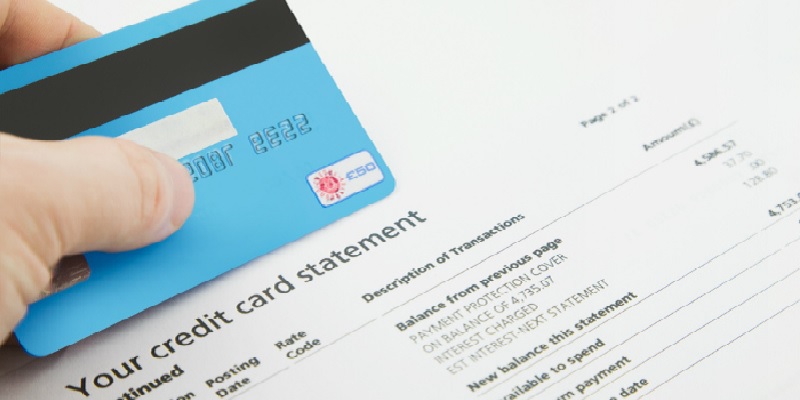 What is a credit card statement? Well, a credit card statement is your card bill that will come in every month. It will tell you what your balance is, the minimum payment date, due date, and a minimum payment warning. If you have a balance that’s over $1,000 your minimum payment will most likely be at least 2% of the balance. If you have a balance that’s under that amount, you will most likely have to pay a $25 flat fee.
What is a credit card statement? Well, a credit card statement is your card bill that will come in every month. It will tell you what your balance is, the minimum payment date, due date, and a minimum payment warning. If you have a balance that’s over $1,000 your minimum payment will most likely be at least 2% of the balance. If you have a balance that’s under that amount, you will most likely have to pay a $25 flat fee.
Remember, if you don’t make your due date it’ll show up as a late fee, it can effect your credit score. With the minimum payment warning, it will show you how to pay off your current bill. Not to mention, it will show you how much interest you’ll be paying for. You should try to pay your balance every month on time before you’re charged with a late fee.
 |
 |
Reading the Credit Card Bill
After you’ve gotten your bill, make sure that you read over the information so there are no mistakes. If there’s a mistake on your bill, it’s best to call the business and clear up the issue as soon as you can. Call your credit card company and see if they need you to send any documents showing that there was a problem on your credit card statement. The account summary will tell you where your account is currently standing. You will see any fees or interest that was charged on your last bill, and when the billing cycle was closed. This is normally in the first section when you look over your credit card statement.
If you have any payments or transactions on your account after the billing cycle has ended, it won’t effect your statement at all. Normally, when you log into your account, it will show you any recent transactions that you’ve made. Next, you’ll want to look at your payment information that’ll show you how much you need to pay. It’s a good idea to pay off your statement before the due date to avoid the late payment penalties. Remember, if you pay less than the required amount, you’ll be charged with a late fee. Your interest will be higher if you’re more than 60 days late, and the 3 major credit bureaus will be notified of your late payment.
You can see in the late payment warning disclosure what’ll happen if you’re ever late on paying your bills. You will see the late fee and the penalty APR that’ll be put onto your account. Don’t stress if you see this warning disclosure, it’s on every billing statement regardless of where your account stands. After you’ve missed 2 statements, your APR will be raised, so after 60 days the card issuer will have it raised to the penalty rate.
The Account Information Section
This has a rewards section that’ll show you if you have a rewards card. There are several statements that’ll explain the spending categories where you’ve earned any points. If you have a card that can gain you more rewards points, you’ll be in for a treat. There are lots of different category options such as: dining, gas, groceries, transportation, and travelling. You’ll be able to gain the most points if you have a card that has a 5% cash back option.
A different section of your bill is the part that shows you the legal disclosures, calculations, and what to do if there’s a problem. It’s not mandatory to read this section every month you get your bill back. However, it will be useful to be familiarized with it to learn their rules and how they calculate your bill. Read more into the account summary to see how they’ve calculated your current balance, it’ll explain everything.
Another section you should look into is the payments and credits. This portion will show you all of your transactions, and any refunds on your account. If there’s a refund placed on your account, make sure that it was applied and processed before you pay your credit statement. Your payments will be put onto your account 1-3 days after you’ve submitted your bill payment.
Statement Charges
Any new charges that your account may have will appear here, it will show the date, merchant, and price. There are some card issuers that are very descriptive with this section such as the location, and what kind of retailer it was. It would be a good idea if you look over this part each month your bill comes in. If you see any transactions that you don’t recognize, then you need to contact that retailer and resolve the matter.
The interest charges portion will show your fees altogether and the interest from a year-to-date. There will also be an explanation on how they’ve calculated the interest charges for that statement period. Plus, there’s a list of every balance type such as: transactions, cash advances, and balance transfers. It will even include the annual percentage rate, your balance will be subject to the rates and the interest fees. Normally, you’ll be building up your interest, but you should always go over this information to see if it’s right. Not to mention, if there are any additional fees that aren’t correct, you should have that checked out. If you own a credit card with an annual fee, you won’t want to pay more for late charges.
Conclusion
Overall, there’s a lot on your credit statement that you need to look over. Be sure to keep an eye out for any additional fees that aren’t supposed to be there, and the transactions you’ve made in the billing cycle. Most card issuers won’t have any of your purchases made after the billing cycle has closed on that statement. However, if you don’t pay your statement on time, you’ll be charged with late payment penalties and your interest will raise.
Furthermore, it would be a good idea if you pay your bills before the deadline, that way you don’t have to pay more than necessary.




